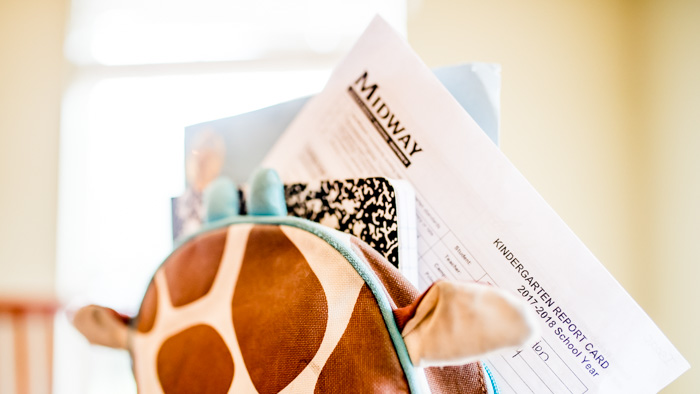Article Library
Why is there a K on my son’s report card?
by Laura Gordon | 7 June 2018
It turns out that the mysterious letter on my son’s report card was part of the early reader reading system used by the school. So, are these reading assessment systems useful for parents? Do the levels of “levelled” reading systems really help a child?
Believe it or not, these levelled systems can sometimes cause more harm than good for certain children. The worrying sign to look out for is repeated guessing of short, easy words. That tends to indicate that your child has a good visual memory and is using a whole-word-sight-reading strategy. Read more on that here.

Instructional Reading Levels: Making sense of a teacher’s tool
Schools rely on a number of different reading level systems to measure student reading performance. In US schools, Fountas and Pinnell and Accelerated Reader are both popular. In schools in the UK, you might see Oxford levels or Book bands, and Canada and Australia have different systems, too. So what’s the point of all these different reading level systems? It depends on who’s asking.
For teachers, reading level systems are classroom tools. Not all kids in a single grade will be able to read at the same level. So, teachers use systems like the one created by Fountas and Pinnell to divide a class up into a number of different, smaller groups, based on how well they read.
However, while levelling systems are a great tool for teachers, they can get us parents into real trouble. According to Sheri Nelson, a veteran teacher and literacy specialist, most of the levelling systems out there were actually NOT designed for parents, and schools are not supposed to tell parents what level their children are at on a report card (although they sometimes do anyway).
There’s a reason why levelling systems shouldn’t appear on report cards, too. Most parents aren’t trained to interpret the reading levels, and it’s easy to make big mistakes when it comes to using those levels to understand your child’s reading ability.
Below, we offer a roadmap to help you avoid the common parent pitfalls when it comes to reading levels.
Making sense of Reading Levels: The DOs and DON’Ts.
1. DON’T focus too much on how your child’s reading level compares to published expectations
If you’re like me, you probably already googled your child’s reading level to see how he or she compares with children at the same grade level. However, Nelson cautions against comparing your child to the published averages. Instead, she recommends considering the reading level in relation to their reading level at the start of the year. Ideally, your child should be showing signs of progress across the school year, although the amount of progress you should expect will vary depending on the child’s age.
And of course, a reading level is still not nearly as informative as a conference with your child’s teacher. If you have questions about your son’s or daughter’s reading progress, they are your first and best ally.
2. DON’T limit your child to only books at their instructional level
Many parents make the same mistake when they see their child’s reading level listed. They assume that the child should only read books at that level. However, limiting a child to just their reading level may actually hurt their reading achievement!
While it’s true that many of these reading systems, like Fountas and Pinnell, were created to pair children with books at their level, that doesn’t mean you should limit your child to only those books. And why not?
While in theory, it might seem that children will learn to read faster by sticking with books at just their level, the reality plays out somewhat differently. As noted literacy expert and University of Chicago professor Tim Shanahan writes, research shows that children who read just right books don’t learn more than the ones who read easier or harder books. Instead, children can actually make profound reading gains by reading both below and above their level. If it’s a book your child wants to read, then let them have at it!
3. DON’T rely on reading levels to gauge whether or not your child is decoding.
Reading levels may not give you the full picture about just how your child is reading. In the early years, bright children with strong memories can often mask their underlying reading weakness by memorizing whole words – or even whole books! – by sight. Regardless of the reading level your child is given, make a point to sit down and listen to him or her read a book.
When you listen to your child read, be sure to pick a book that will require your child to sound out, or decode unfamiliar words. One of the most important skills for young children to master is decoding. When you listen to your child read, you want to see whether or not they are working to decode, or sound out, unfamiliar words.
As you listen to your child read, it’s always a good idea to keep an eye out for guessing. If you see your child guess short, easy words, particularly when they have read those words successfully only a page before, it can be a sign that they are struggling to decode accurately. It doesn’t matter how high a child’s reading level is – when you see them guess short easy words like “what” or “who,” it is almost always a signal that there is an underlying decoding issue. By noticing this decoding issue, and taking steps to help your child decode successfully, you can help them become a more successful, more confident reader, regardless of their reading level.
 Laura Gordon was a lecturer in English literature at the University of Maryland and editor for Public Health. She is a mother of two children and is now an Easyread System Manager for David Morgan Education, supporting children and their parents on the journey to confident reading and writing.
Laura Gordon was a lecturer in English literature at the University of Maryland and editor for Public Health. She is a mother of two children and is now an Easyread System Manager for David Morgan Education, supporting children and their parents on the journey to confident reading and writing.
